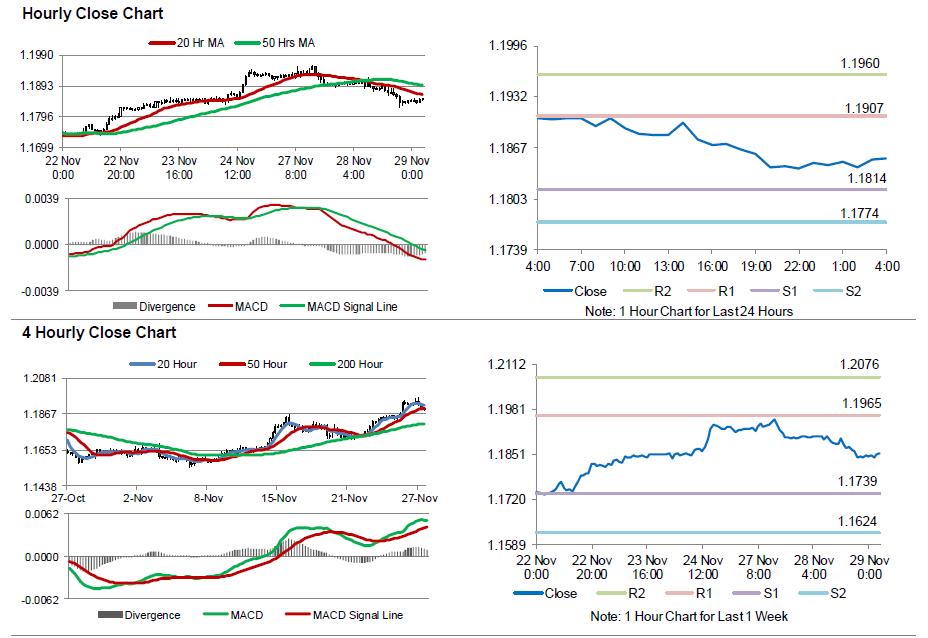For the 24 hours to 23:00 GMT, the EUR declined 0.44% against the USD and closed at 1.1848.
In economic news, Germany’s GfK consumer confidence index remained unchanged at 10.7 in December, in line with market expectations.
Meanwhile, the Organisation for Economic Cooperation and Development (OECD), in its latest economic outlook, lifted Euro-zone’s growth forecast for this year and next, citing stronger growth in key European countries. The organisation expects the common currency region to grow 2.4% in 2017 and 2.1% in 2018, up from previous projections of 2.1% and 1.9% respectively. However, it further predicted that growth would sink back below 2.0% in 2019. The organisation also warned that the European Central Bank (ECB) should hold on raising interest rates before the end of the decade as raising rates too quickly “could weigh on the recovery in countries with high unemployment and large output gaps”.
Additionally, the OECD indicated that global economic growth in 2017 will be the best in seven years, but raised concerns about the longer-term outlook, citing “clear weaknesses and vulnerabilities”. Moreover, the Paris-based organisation expects the global economy to grow 3.6% in 2017 and 3.7% in 2018, before easing to 3.6% in 2019. Nevertheless, it warned that growth would slow from 2019 without new measures to promote business investment, productivity and more inclusive growth.
The US Dollar climbed against its key counterparts, following upbeat US consumer confidence data.
The CB consumer confidence index surprised to the upside, advancing to a nearly 17-year high level of 129.5 in November, amid optimism over the nation’s labour market. In the prior month, the index had registered a revised level of 126.2, while markets had envisaged for a drop to a level of 124.0.
On the other hand, the nation’s advance goods trade deficit widened more-than-anticipated to $68.3 billion in October, compared to market expectations for a deficit of $64.9 billion. In the prior month, the nation reported a trade deficit of $64.1 billion. Further, the nation’s seasonally adjusted flash wholesale inventories unexpectedly dropped 0.4% on a monthly basis in October, defying market consensus for a gain of 0.4% and compared to an increase of 0.3% in the previous month.
The OECD inched up its growth outlook for the US economy, now expecting the world’s largest economy to post a growth of 2.2% this year and 2.5% in 2018, stating that proposed tax cuts would give economic growth a temporary boost. However, growth is forecasted to slip back to 2.1% in 2019.
In the Asian session, at GMT0400, the pair is trading at 1.1854, with the EUR trading marginally higher against the USD from yesterday’s close.
The pair is expected to find support at 1.1814, and a fall through could take it to the next support level of 1.1774. The pair is expected to find its first resistance at 1.1907, and a rise through could take it to the next resistance level of 1.1960.
Moving ahead, investors would draw their attention to Germany’s flash consumer price inflation figures for November along with the Bundesbank monthly report, both due to release in a few hours. Moreover, the US annualised 3Q GDP, the Beige book report and pending home sales data for October, all set to release later in the day, will garner significant amount of investor attraction. Also, a speech by the Federal Reserve (Fed) Chair, Janet Yellen will keep investors on their toes.
The currency pair is trading below its 20 Hr and 50 Hr moving averages.

